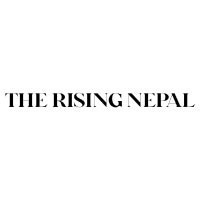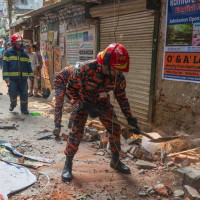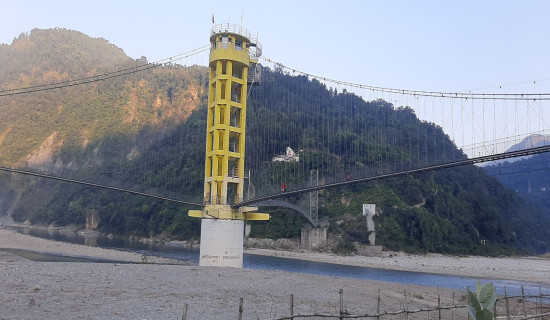- Saturday, 22 November 2025
‘Tracing the Himalaya’ on display
By A Staff Reporter,Kathmandu, Nov. 22: An art exhibition titled ‘Tracing the Himalaya’ has begun in Kathmandu on Friday, organised by Chhoser Arts Mustang in collaboration with the Nepal Academy of Fine Arts (NAFA).
The exhibition was inaugurated by the Academy’s Chancellor, Nardamani Hartamchhali.
He said that if one wishes to find the essence of Nepali art, they must explore artworks created based on philosophies and principles rooted in the folk traditions of the homeland.
He added, “At a time when Himalayan culture is fading, today’s programme has become an exemplary event, featuring art created according to the ethno-cognitive knowledge of the Himalayan region and based on the inherent philosophy of one’s birthplace.”
The Head of the Academy’s Traditional Art Department, Palsangmo Lama, said that artworks based on traditional knowledge systems practised in Himalayan daily life strengthen our unique identity, and such knowledge should be included in school and college curricula for preservation and promotion.
Chhoser Arts Mustang’s Director, Chhiring Phonjo Gurung, said that Himalayan art is rarely seen in exhibitions held in Kathmandu and has not received the attention it deserves.
He said that the objective of organising this exhibition is to draw public focus toward Himalayan art, and although this edition features only four artists, it will be organised on a much larger scale in the future.
Curator Mina Lama said that the exhibition portrays the spiritual practices and struggles of people living in the pristine Himalayan region.
She said that the daily life, challenges, and contemporary socio-cultural aspects of Mugu, Dolpa, Sindhupalchok, and Mustang have been depicted through visual imagery.
The exhibition features a total of 64 artworks, including 20 pieces by Chhiring Phonjo Gurung from Mustang, 17 by Tenzing Angdak Gurung from Dolpa, 18 by Dhorje Gurung Lama from Mugu, and nine by Pemba Sherpa from Sindhupalchok.
The exhibition primarily showcases landscapes and thangkas. The event also included cultural presentations such as the Syabru dance, which represents the Himalayan region.
The exhibition will continue until November 25.














